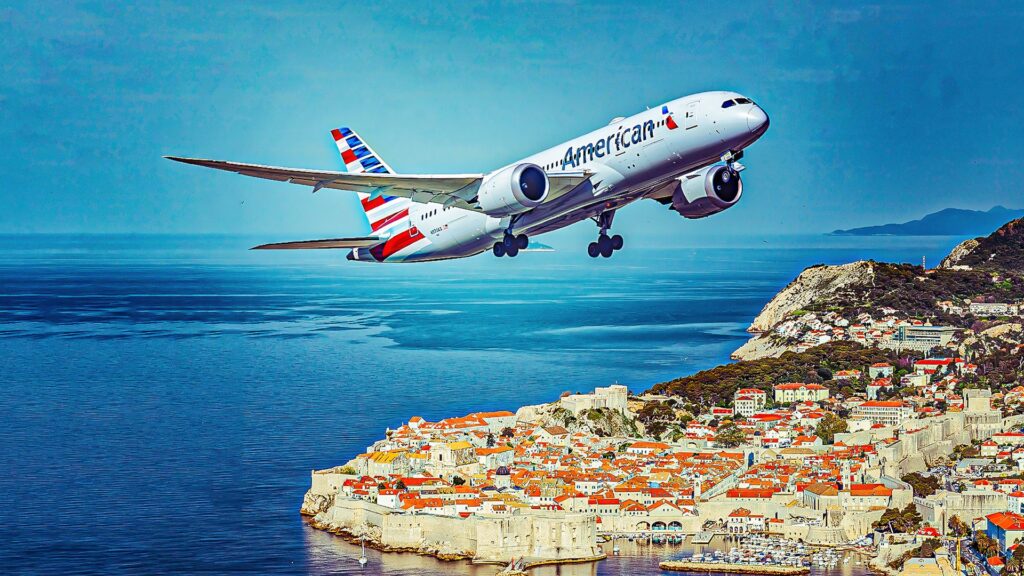
The Croatian city of Dubrovnik is positioning itself as a strong contender for American Airlines‘ next European leisure destination. The city’s airport has confirmed ongoing discussions with American Airlines and representatives from its hub at Chicago O’Hare International Airport (ORD). Currently, Dubrovnik has only one nonstop connection to the United States, operated by United Airlines to the New York area.
Dubrovnik has seen a surge in tourism, becoming one of Europe’s most prominent coastal cities. Its walled Old Town, a UNESCO World Heritage Site, attracts visitors for its historical significance and scenic beauty. The city’s popularity has soared, aided by its portrayal as King’s Landing in the television series Game of Thrones, which has drawn fans from around the globe. In 2024, Dubrovnik is projected to welcome approximately 1.35 million arrivals and 4.2 million overnight stays, reflecting a robust tourism industry.
American Airlines is re-entering an expansion phase across the Atlantic, planning to introduce new summer routes from multiple hubs, including Philadelphia, Dallas-Fort Worth, and Chicago. The airline will utilize its new Airbus A321XLR for these long-haul routes, which are designed for markets that do not require widebody service. This strategic shift opens the door for American Airlines to consider reviving its former seasonal route from Philadelphia International Airport (PHL) to Dubrovnik or launching a new route from Chicago, effectively connecting this Adriatic destination to its extensive domestic network.
American Airlines’ International Strategy
Currently, American Airlines’ international strategy focuses on a select number of powerful hubs, emphasizing sustainable growth over aggressive expansion. The airline primarily operates from hubs in Philadelphia, Dallas-Fort Worth, Charlotte, Miami, Chicago, and New York’s JFK Airport. This approach allows for efficient route management and the ability to cater to leisure travelers during peak seasons.
The airline’s recent strategy has involved cautiously reintroducing service to secondary European markets like Prague and Budapest, while enhancing connections to major cities such as Athens, Milan, and Zurich. The introduction of the Airbus A321XLR, which seats approximately 155 passengers and boasts a range of around 4,700 nautical miles, will enable American Airlines to explore new city pairs, particularly from its East Coast hubs. This aircraft is particularly suited to the type of seasonal operations required for a destination like Dubrovnik.
Why Dubrovnik Appeals to American Airlines
Several compelling factors contribute to Dubrovnik’s appeal for American Airlines. Prior to the pandemic, the airline operated a seasonal route between Philadelphia and Dubrovnik, attracting nearly 18,000 passengers in 2019, with load factors exceeding 80%. The local airport is actively pursuing a second U.S. route, building on United Airlines’ existing service from Newark to Dubrovnik. This development indicates a strong intent to enhance connectivity to the United States.
The continued growth in U.S. visitors to Croatia, coupled with United Airlines’ plans to introduce seasonal flights to Split starting in 2026, suggests a burgeoning market that could support multiple routes. Dubrovnik’s strategic location and rising profile as a leisure destination align well with American Airlines’ goals of tapping into profitable markets. The city is increasingly recognized for its rich history and cultural significance, which appeals to high-spending tourists.
The only nonstop service currently available between Croatia and the United States is United Airlines’ seasonal flight to Dubrovnik, illustrating how underserved the market is. American Airlines’ potential entry could significantly improve connectivity, especially during peak summer months.
In conclusion, Dubrovnik represents an attractive opportunity for American Airlines as it seeks to expand its leisure offerings in Europe. The combination of high-season demand, limited competition, and a strategic fit with the airline’s hub network makes this Croatian destination a compelling candidate for new service. The airline’s decision will likely focus on leveraging its existing network to maximize passenger flow to this culturally rich city.






